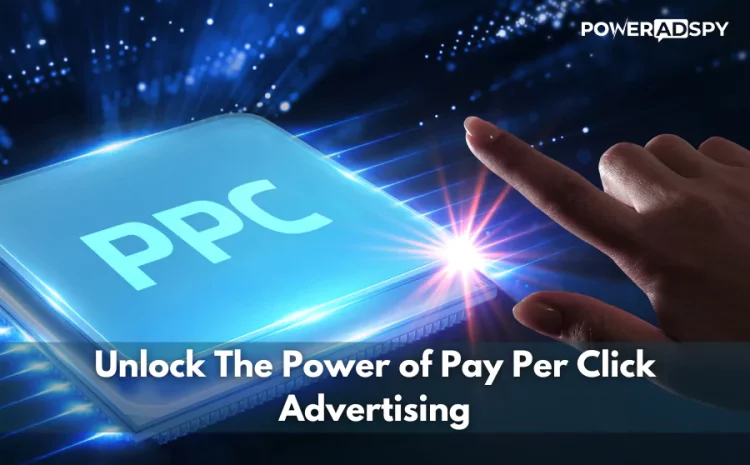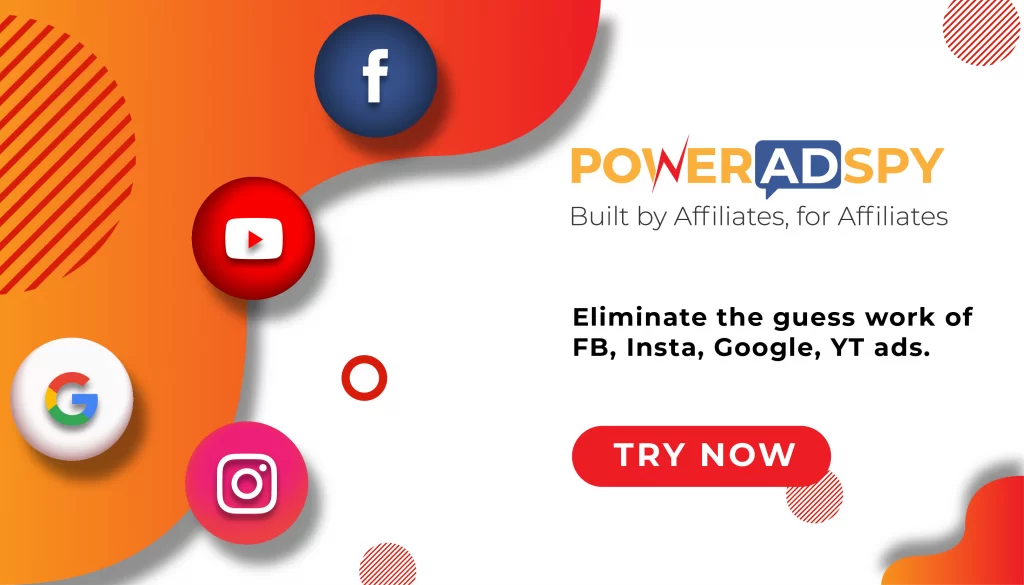How To Dominate Search Results With Pay Per Click Advertising?
Pay per click advertising has become a cornerstone of digital marketing, allowing businesses to place their ads in front of potential customers right when actively searching for relevant products or services. This targeted approach not only increases visibility but also drives high-quality traffic to your website. For businesses aiming to stay ahead in a competitive market, mastering pay per click advertising is crucial.
Investing in pay per click advertising ensures your ads appear at the top of search engine results, capturing the attention of users with a clear intent to engage. This immediate visibility leads to more clicks and higher conversion rates, ultimately boosting your return on investment.
The beauty of PPC campaigns lies in their flexibility and precision, allowing marketers to make real-time adjustments and stay relevant in an ever-changing digital landscape. Now, let’s delve deeper into understanding what pay per click advertising entails and why it’s become an essential tool for modern marketers.
In a hurry? Listen to the blog instead!
What Is PPC Advertising?
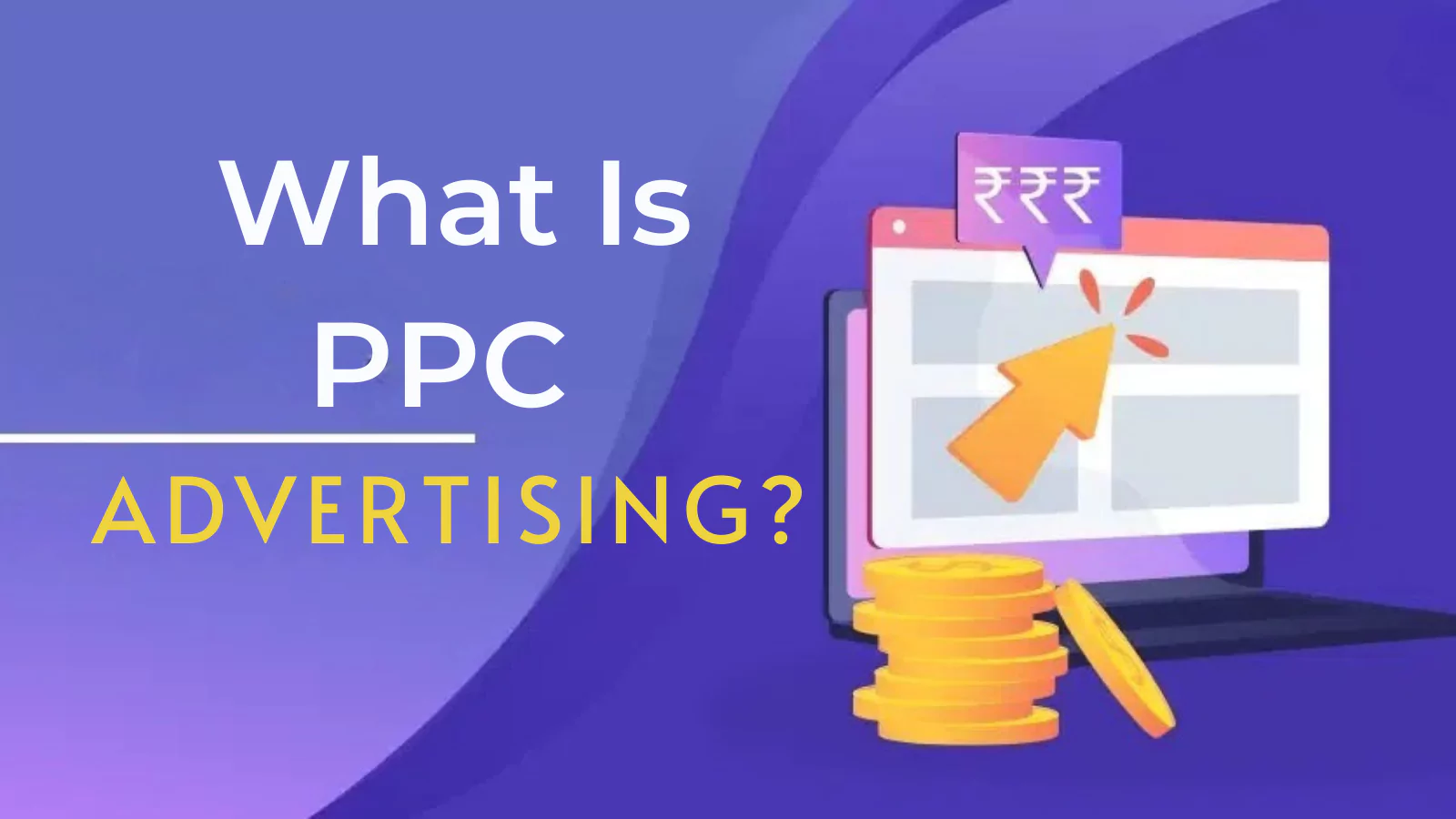 So, what exactly is pay per click advertising? At its core, PPC is an online marketing model where advertisers pay a fee each time their ad is clicked. Imagine a system where you are essentially purchasing visits to your site, rather than relying solely on organic traffic. This method ensures that your ads are shown to users actively searching for your products or services, making it a highly effective strategy for driving targeted traffic.
So, what exactly is pay per click advertising? At its core, PPC is an online marketing model where advertisers pay a fee each time their ad is clicked. Imagine a system where you are essentially purchasing visits to your site, rather than relying solely on organic traffic. This method ensures that your ads are shown to users actively searching for your products or services, making it a highly effective strategy for driving targeted traffic.
In a PPC campaign, advertisers bid on specific keywords relevant to their business. These keywords trigger the appearance of their ads on search engine results pages (SERPs) when users search for those terms. The higher the bid and the more relevant the ad, the more likely it is to appear at the top of the search results. This visibility is crucial for capturing the attention of potential customers.
There are several platforms where pay per click advertising can be implemented, with Google Ads being the most popular. Other notable platforms include Bing Ads, Facebook Ads, and LinkedIn Ads. Each platform has its own set of rules, targeting options, and pricing models, but the underlying principle remains the same: advertisers pay for each click their ad receives.
Pay per click advertising is favored by many businesses because it offers immediate results, precise targeting, and measurable ROI. Unlike other marketing strategies that may take time to show results, PPC campaigns can drive traffic and conversions almost instantly. Additionally, businesses can control their budget, targeting options, and ad creatives, allowing for a highly customizable and scalable approach to online advertising.
Next, let’s explore the evolution of pay per click advertising and how it has transformed over the years.
The Evolution Of Pay Per Click Advertising
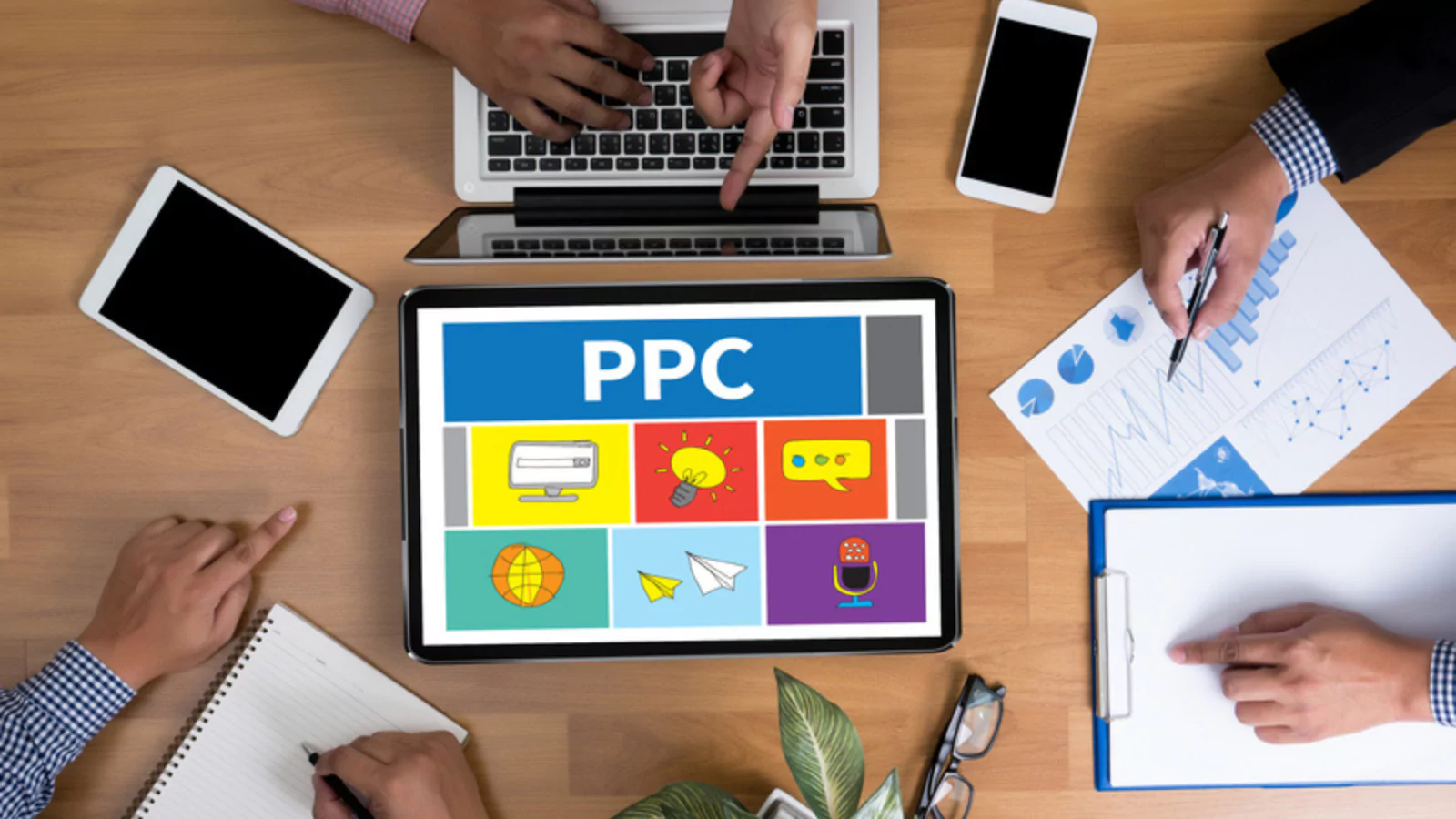 From its inception to its current state, pay per click advertising has undergone significant transformations. Understanding its evolution offers valuable insights into the future of digital advertising. It also helps in appreciating the strategic advantage PPC holds today.
From its inception to its current state, pay per click advertising has undergone significant transformations. Understanding its evolution offers valuable insights into the future of digital advertising. It also helps in appreciating the strategic advantage PPC holds today.
Early Days of Pay Per Click Advertising
- In the early days of the internet, digital advertising was in its infancy.
- Display ads and banners were the primary methods of online promotion.
- The need for a more targeted and efficient advertising model led to the birth of pay per click advertising in the late 1990s.
The Birth of Pay Per Click Advertising
- GoTo.com introduced the pay-per-click model in 1998.
- Advertisers could bid on keywords, and the highest bidder’s ad would appear at the top of search results.
- This auction-based system revolutionized digital advertising by ensuring that businesses only paid for actual clicks, rather than impressions.
Google AdWords and the Rise of Pay Per Click Advertising
- The launch of Google AdWords in 2000 marked a significant milestone in the evolution of pay per click advertising.
- Google AdWords (now Google Ads) introduced a more sophisticated and user-friendly platform for creating highly targeted campaigns.
- The Quality Score system ensured that ads were ranked based on relevance and user experience, not just bids.
Expansion to Social Media Advertising
- With the emergence of platforms like Facebook, Twitter, and LinkedIn, PPC advertising found new avenues for growth.
- These platforms allowed advertisers to reach specific audiences by leveraging user interests, behaviors, and demographics, leading to highly personalized and impactful campaigns.
Advancements in Technology
- Recent years have seen advancements in artificial intelligence and machine learning, further transforming pay per click advertising.
- Automated bidding, dynamic search ads, and responsive search ads are examples of how technology is making PPC campaigns more efficient and effective.
Understanding the evolution of pay per click advertising highlights the strategic advantage it holds in modern digital marketing. As we look to the future, pay per click advertising is poised to continue evolving, offering even more sophisticated tools for businesses to connect with their target audiences.
Having explored the journey of pay per click advertising, let’s now dive into the key benefits of PPC marketing and how it can significantly boost your business’s online presence.
Key Benefits Of PPC Marketing
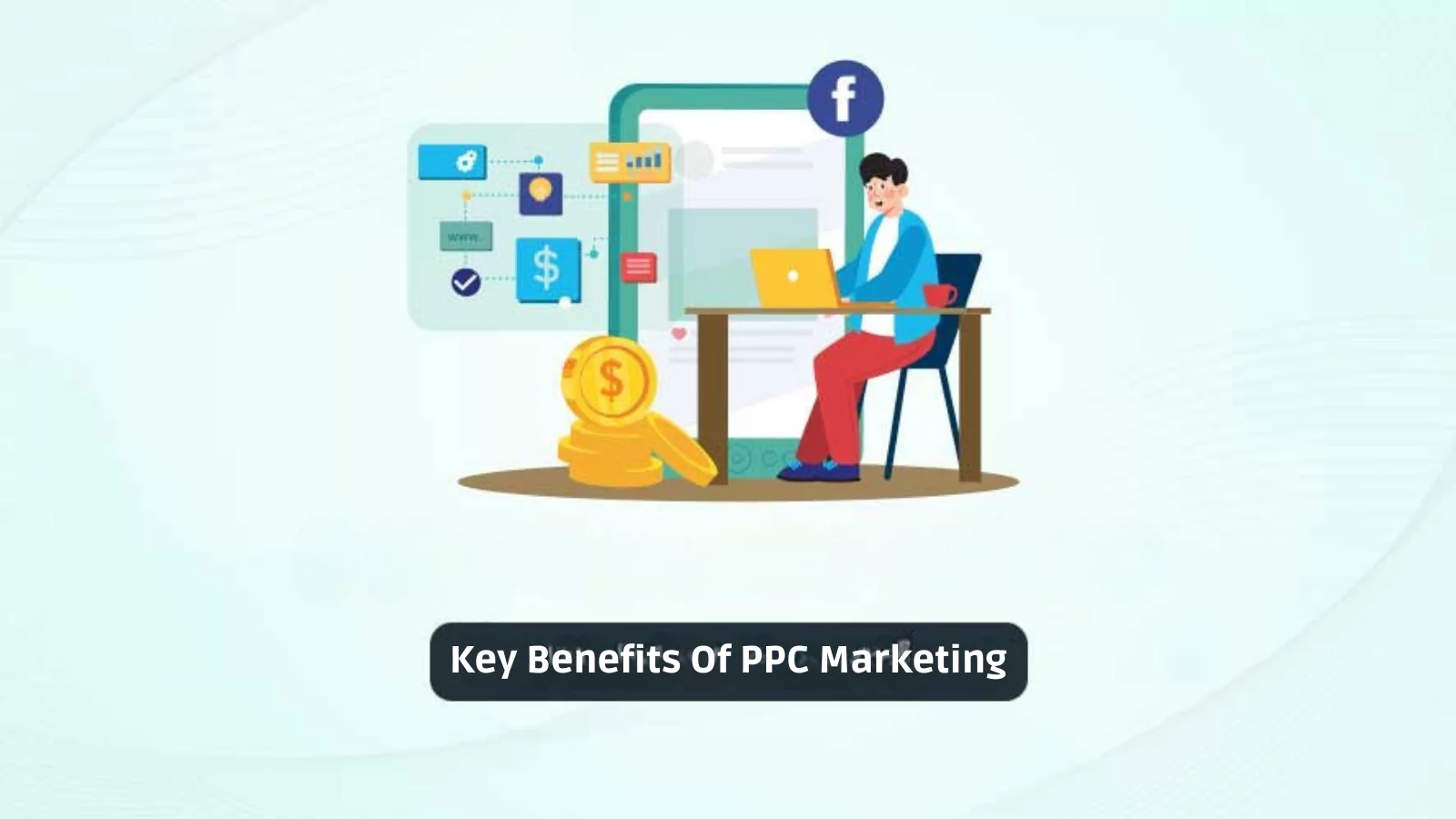 With the basics and history covered, it’s time to explore the tangible benefits of PPC marketing. Businesses leveraging PPC marketing can expect increased visibility, cost-effectiveness, and precision targeting, among other advantages. Here, we’ll break down how PPC marketing can significantly boost your business’s online presence.
With the basics and history covered, it’s time to explore the tangible benefits of PPC marketing. Businesses leveraging PPC marketing can expect increased visibility, cost-effectiveness, and precision targeting, among other advantages. Here, we’ll break down how PPC marketing can significantly boost your business’s online presence.
Increased Visibility
- Immediate Exposure: Unlike organic search efforts, PPC marketing provides immediate exposure. Your ads appear at the top of search engine results, ensuring that your business is seen by potential customers right away.
- Enhanced Brand Awareness: Even if users don’t click on your ads, they still see your brand name, which increases overall brand recognition and trust.
Cost-Effectiveness
- Controlled Budget: One of the most appealing aspects of PPC marketing is the ability to control your budget. You can set daily or monthly spending limits, ensuring you never exceed your marketing budget.
- Pay for Performance: With PPC, you only pay when someone clicks on your ad. It ensures the budget is spent on engaging users interested in your offerings.
Precision Targeting
- Keyword Targeting: PPC marketing allows you to target specific keywords relevant to your business, ensuring your ads are shown to users with search intent that aligns with your offerings.
- Demographic Targeting: Platforms like Google Ads and Facebook Ads enable you to target users based on demographics, such as age, gender, location, and interests. This level of targeting ensures your ads reach the right audience.
Measurable Results
- Trackable Metrics: PPC campaigns provide detailed analytics and reports, allowing you to track impressions, clicks, and conversions. This data helps you measure the effectiveness of your campaigns and make informed decisions.
- ROI Calculation: With measurable results, you can calculate the return on investment (ROI) of your PPC campaigns, ensuring your marketing efforts are delivering value.
Flexibility and Scalability
- Adjustable Campaigns: PPC campaigns offer flexibility, allowing you to make real-time adjustments to your ads, keywords, and budget based on performance data.
- Scalable Efforts: Whether a small business or a large enterprise, PPC marketing can scale to meet your needs. You can start with a small budget and gradually increase your investment as you see positive results.
Competitive Advantage
- Outperform Competitors: By strategically bidding on high-performing keywords, you can outperform competitors and secure top ad placements, driving more traffic to your site.
- Market Insights: PPC tools provide insights into competitors’ strategies, helping you stay ahead in the competitive landscape.
With these benefits in mind, it’s clear that PPC marketing can significantly enhance your business’s online presence and drive targeted traffic to your website. Next, let’s explore how to create a successful PPC campaign, from keyword research to ad creation and budget management.
Creating A Successful Pay Per Click Advertising Campaign
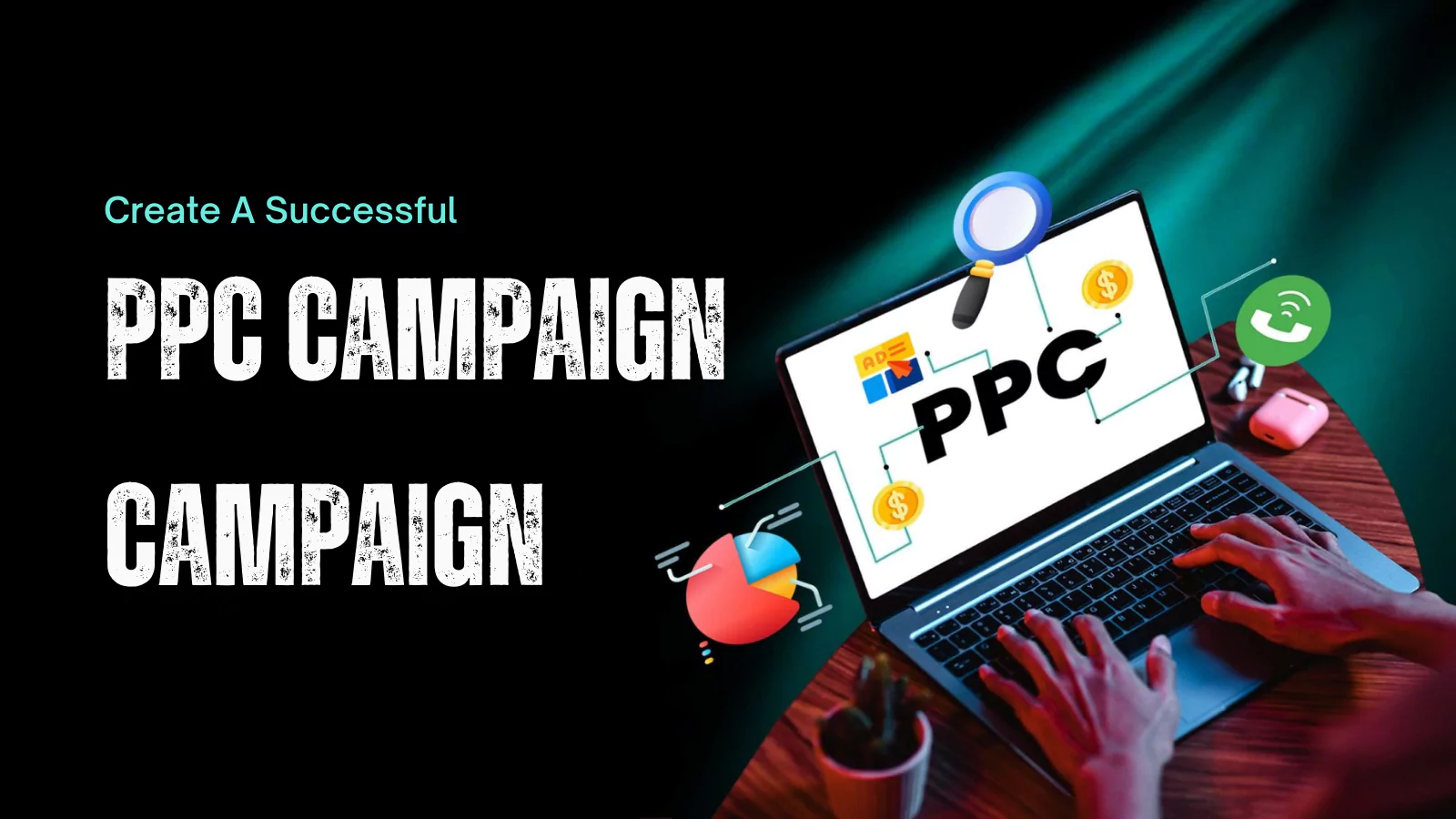 Now that we know the benefits, the next logical step is to learn how to create a successful PPC campaign. This section will offer a comprehensive guide, from conducting keyword research to crafting compelling ads and managing budgets effectively. By following these steps, you’ll be well on your way to launching impactful PPC campaigns.
Now that we know the benefits, the next logical step is to learn how to create a successful PPC campaign. This section will offer a comprehensive guide, from conducting keyword research to crafting compelling ads and managing budgets effectively. By following these steps, you’ll be well on your way to launching impactful PPC campaigns.
1: Conducting Keyword Research
- Identify Relevant Keywords: Start by brainstorming keywords relevant to your business and industry. Think about the terms potential customers might use when searching for your products or services.
- Use Keyword Research Tools: Utilize tools like Google Keyword Planner, SEMrush, or Ahrefs to discover high-volume and low-competition keywords. These tools provide valuable insights into keyword search volume, competition, and cost-per-click (CPC).
- Group Keywords into Themes: Organize your keywords into related groups or themes. It will help you create more targeted ad campaigns and groups, ensuring your ads are relevant to the search queries.
2: Crafting Compelling Ads
- Write Attention-Grabbing Headlines: Your ad headline is the first thing users see, so make it count. Use your primary keyword and create a sense of urgency or offer a solution to the user’s problem.
- Include Relevant Ad Copy: Ensure your ad copy is concise, persuasive, and includes a clear call-to-action (CTA). Highlight the unique selling points (USPs) of your products or services.
- Utilize Ad Extensions: Take advantage of ad extensions to provide additional information and improve the visibility of your ads. Extensions like site links, callouts, and structured snippet extensions can enhance your ad’s performance.
3: Setting Up Ad Groups and Campaigns
- Create Targeted Ad Groups: Group your keywords into ad groups based on themes or product categories. Each ad group should have its own set of relevant ads and keywords.
- Set Campaign Goals: Define clear objectives for your PPC campaign, such as increasing website traffic, generating leads, or boosting sales. Your goals will guide your campaign strategy and performance metrics.
4: Managing Budgets and Bids
- Determine Your Budget: Decide on a daily or monthly budget for your PPC campaign. Consider starting with a modest budget and gradually increasing it based on campaign performance.
- Set Bids Strategically: Choose between manual and automated bidding strategies. Manual bidding allows you to set your bids for each keyword, while automated bidding uses algorithms to optimize bids for maximum results.
5: Monitoring and Optimizing Campaigns
- Track Performance Metrics: Use analytics tools to monitor key performance indicators (KPIs) such as click-through rate (CTR), conversion rate, and cost-per-conversion. Regularly review these metrics to assess your campaign’s performance.
- Optimize Keywords and Ads: Continuously refine your keyword list and ad copy based on performance data. Pause or adjust underperforming keywords and ads, and test new variations to improve results.
- Conduct A/B Testing: Run A/B tests to compare different ad elements, such as headlines, ad copy, and CTAs. It helps identify the most effective combinations and optimize your ads for better performance.
Leveraging PPC Ads Spy Tools To gain a competitive edge, consider using tools like PowerAdSpy. PowerAdSpy allows you to analyze competitor ads, uncover trends, and optimize your campaigns for maximum impact1. By understanding what your competitors are doing, you can refine your strategies and stay ahead.
By following these steps, you’ll be well-equipped to create and manage successful PPC campaigns that drive targeted traffic and achieve your marketing goals.
Enhance PPC Campaigns With PowerAdSpy
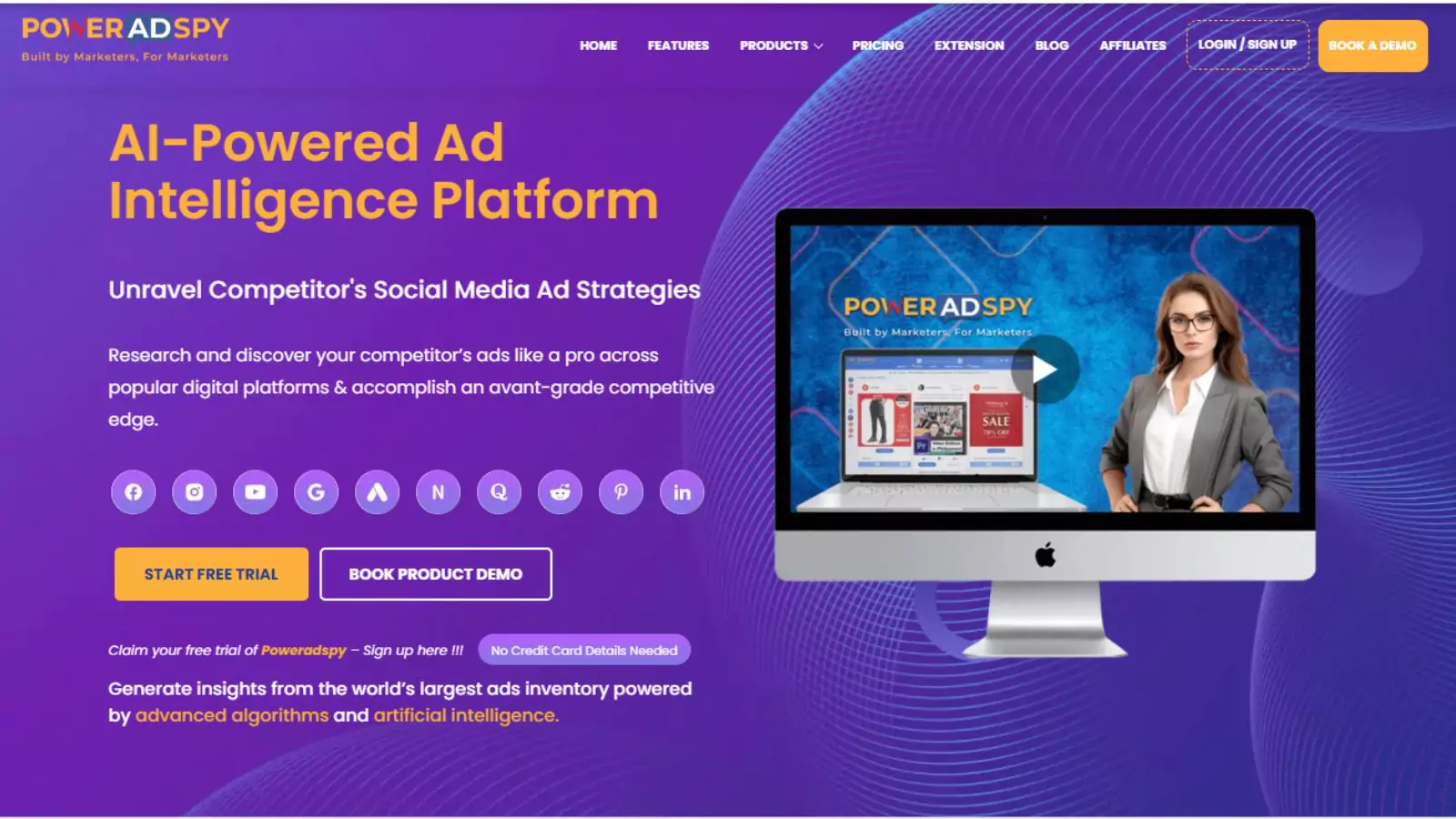 To gain a competitive edge, consider using tools like PowerAdSpy. PowerAdSpy is a PPC ads spy tool that allows you to analyze competitor ads, uncover trends, and optimize your campaigns for maximum impact. By understanding what your competitors are doing, you can refine your strategies and stay ahead in the game.
To gain a competitive edge, consider using tools like PowerAdSpy. PowerAdSpy is a PPC ads spy tool that allows you to analyze competitor ads, uncover trends, and optimize your campaigns for maximum impact. By understanding what your competitors are doing, you can refine your strategies and stay ahead in the game.
Key Features of PowerAdSpy:
- Ad Analysis: Explore and analyze ads from competitors across various platforms, including Facebook, Google Display Network, and more.
- Trend Discovery: Identify emerging trends and successful ad strategies to incorporate into your campaigns.
- Detailed Insights: Access comprehensive reports on ad performance, including engagement stats, ad placement, and CTAs.
- Efficiency: Save time on ad research and focus on creating impactful campaigns.
- Customization: Filter ads by components like text, image, and brand to find the most relevant and effective ads.
By leveraging PowerAdSpy, you can enhance your PPC campaigns with data-driven insights and stay ahead of the competition.
Innovative Strategies For Maximizing ROI In PPC Marketing
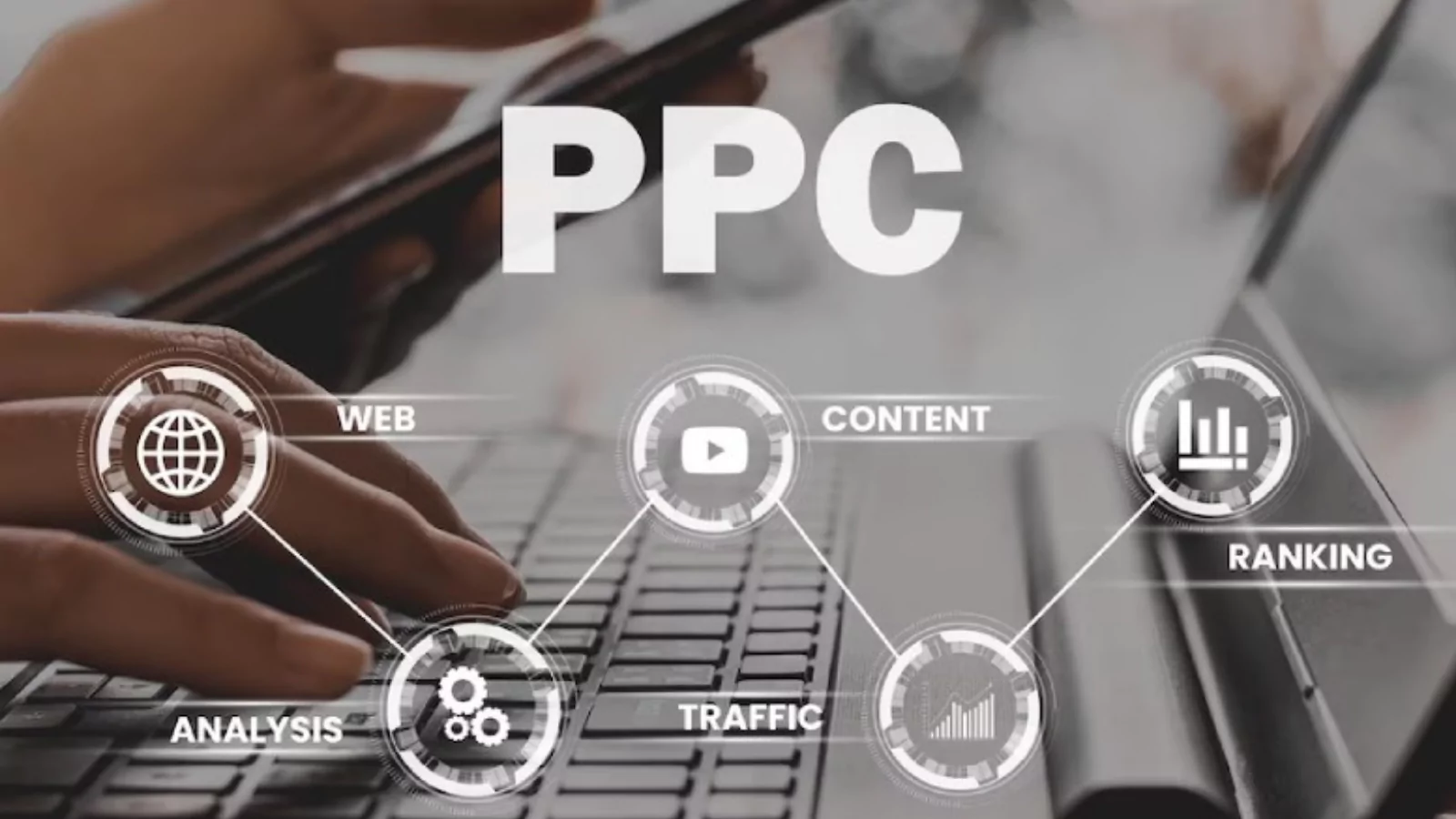 To wrap things up, let’s explore advanced strategies to maximize your return on investment (ROI) in PPC marketing. These tips will help you get the most out of your campaigns:
To wrap things up, let’s explore advanced strategies to maximize your return on investment (ROI) in PPC marketing. These tips will help you get the most out of your campaigns:
Ad Optimization
- Improve Quality Score: Focus on relevance and user experience to lower CPC and gain better ad placements.
- Use Negative Keywords: Filter out irrelevant searches to refine your audience.
- Optimize Ad Copy: Regularly update and test ad copy to be more engaging and relevant.
A/B Testing
- Test Ad Variations: Compare headlines, ad copy, and CTAs to identify the best-performing combinations.
- Experiment with Landing Pages: A/B tests different designs and content to improve conversions.
- Evaluate Performance Metrics: Monitor key metrics to make data-driven decisions and optimize ads.
Precise Targeting Techniques
- Audience Segmentation: Tailor ad campaigns for different audience segments to increase relevance.
- Remarketing Campaigns: Target users who have previously visited your site to encourage repeat visits.
- Geo-Targeting: Show ads to users in specific locations for local relevance.
Leveraging Automation and AI
- Automated Bidding: Use automated bidding strategies for real-time bid optimization.
- Dynamic Search Ads: Automatically generate relevant ads based on your website content.
- Responsive Search Ads: Adapt headlines and descriptions to improve ad performance.
Data-Driven Decision Making
- Analyze Competitor Ads: Use tools like PowerAdSpy to understand competitor strategies.
- Monitor Performance: Regularly review campaign performance and adjust strategies based on data insights.
By implementing these strategies, you can optimize your PPC marketing efforts and achieve greater returns on your investment. Continuously test, analyze, and refine your campaigns to stay competitive and drive success.
Also Read:
The Power Of PPC Bidding: Strategies That Drive Growth
How To Use PPC Spy Tools To Enhance Your Business
Master Google Online Ads In 13 Steps (Like A Michelin-Star Chef!)
How Expert Blog Advertising Can Skyrocket Your Traffic?
Conclusion
As we’ve explored, pay per click advertising offers immense opportunities for businesses to enhance their online presence, drive targeted traffic, and achieve their marketing goals. From understanding the basics and evolution of PPC to leveraging advanced strategies and tools like PowerAdSpy, this PPC guide has covered essential aspects to help you succeed.
By mastering PPC marketing, creating effective campaigns, and continuously optimizing your efforts, you can maximize your return on investment and stay ahead in a competitive digital landscape. Remember, the key to success lies in staying informed, adapting to changes, and utilizing the right tools to gain valuable insights.
With the knowledge and strategies shared in this blog, you’re now well-equipped to harness the power of pay per click advertising and take your digital marketing efforts to the next level. Here’s to your success in achieving remarkable results with pay per click advertising!
FAQs: Pay Per Click Advertising
-
How much should I budget for a Pay Per Click advertising campaign?
The budget for a PPC campaign depends on several factors, including your industry, competition, and marketing goals. It’s best to start with a modest budget, monitor performance, and adjust your spending based on the results. Keep in mind that high-competition keywords may require a larger budget to achieve desired results.
-
How do I choose the right PPC platform for my business?
Choosing the right PPC platform depends on your target audience and business goals. Google Ads is ideal for reaching a broad audience through search and display networks. Social media platforms like Facebook Ads and LinkedIn Ads are great for targeting specific demographics and interests. Evaluate each platform’s features and benefits to determine the best fit for your business.
-
Can Pay Per Click advertising work for small businesses?
Yes, PPC advertising can be highly effective for small businesses. It offers immediate visibility, precise targeting, and a controlled budget, making it accessible and scalable for businesses of all sizes. Small businesses can benefit from local targeting and cost-effective campaigns to reach their specific audience.
-
What are the key metrics to track in a Pay Per Click advertising campaign?
Key metrics to track in a PPC campaign include click-through rate (CTR), conversion rate, cost-per-click (CPC), cost-per-acquisition (CPA), and return on investment (ROI). Monitoring these metrics helps you assess the performance of your campaigns and make data-driven decisions to optimize results.
-
How often should I review and optimize my Pay Per Click advertising campaigns?
It’s essential to regularly review and optimize your Pay Per Click advertising campaigns to ensure they remain effective. A good practice is to conduct weekly or bi-weekly reviews of key metrics and performance. Make adjustments to keywords, ad copy, bids, and targeting based on the data to continuously improve your campaign’s efficiency and ROI.

